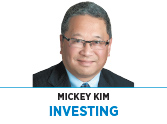Subscriber Benefit
As a subscriber you can listen to articles at work, in the car, or while you work out. Subscribe Now Investors endured a brutal fourth quarter of 2018, with the S&P 500 losing 13.5 percent (at one point a whisker shy of a bear-market decline of 20 percent from its Sept. 20 peak), as anxiety increased over the Federal Reserve’s raising short-term interest rates too quickly, the threat of the tariff spat with China morphing into an all-out trade war, a possible slowdown in global economic/earnings growth, and the inability of our political “leaders” to avoid a government shutdown.
Investors endured a brutal fourth quarter of 2018, with the S&P 500 losing 13.5 percent (at one point a whisker shy of a bear-market decline of 20 percent from its Sept. 20 peak), as anxiety increased over the Federal Reserve’s raising short-term interest rates too quickly, the threat of the tariff spat with China morphing into an all-out trade war, a possible slowdown in global economic/earnings growth, and the inability of our political “leaders” to avoid a government shutdown.
As always, the financial media stood ready to stoke the flames of fear with headlines blaring about December 2018 being the worst December for stocks since the Great Depression, Christmas Eve 2018 being the worst in history, and 2018 the worst year since the global financial crisis a decade ago.
After an abnormally calm 2017, volatility returned with a vengeance in 2018 and seemed to reach a crescendo in the final week, with the Dow Jones Industrial Average suffering its aforementioned worst Christmas Eve and experiencing its first 1,000-point up day and largest intra-day point swing in its 120-year history on consecutive trading days (Dec. 24, 26 and 27).
Not only is volatility normal, it is necessary for generating outstanding long-term returns. As Warren Buffett said, widespread fear is your friend as an investor, as it serves up bargain purchases.
This is the silly season when market pundits make bold forecasts for the coming year. Sorry to disappoint, but I don’t have a crystal ball and neither do they.
Jay Mooreland is founder of The Behavioral Finance Network, who believes that, by understanding our behavioral biases, investors can achieve better results. He has given me permission to make his 2019 “non-forecast” my own.
Before I get into my market forecast for 2019, I want you to consider why forecasts are so alluring to investors. What is the force that influences us to make decisions based on forecasts? There is ample evidence that expert forecasts are correct only half of the time, yet we are still attracted to them. Why?
You may not be able to put your finger on it because our attraction to forecasts is largely subconscious. It boils down to how the brain likes to operate. Our brain is a planning machine; it finds much contentment and peace in being able to plan. When we don’t know what the future holds, we can’t plan with certainty. This bothers the brain, so it subconsciously seeks some sort of certainty. And forecasts, especially confident ones, provide an illusion of certainty.
We are subconsciously attracted to forecasts even though we consciously recognize that forecasts historically have not been very accurate. We fix this problem by giving greater weight to forecasts that (1) confirm what we want to happen (2) are more confident than others. But these don’t improve the accuracy, just our perception of accuracy.
I am quite confident in my forecast for 2019. To be fair, it was the same forecast I had for 2018 and will likely be the same forecast in future years. Why wouldn’t I keep it the same? … It has an overall accuracy very close to 100 percent.
◗ The economy/market will do something that surprises us.
◗ Investors who watch the market often will experience more stress and greater unhappiness than those that don’t.
◗ No one will be able to predict what will happen, but it will all seem obvious in hindsight.
◗ You will be tempted to abandon your plan at some point based on expert forecasts and/or short-term market performance.
◗ Investors that focus on those things they can control (i.e. their reaction to volatility) will have a better investment experience than those that focus on what they can’t control nor predict (i.e. the sources of volatility).
◗ Investors who abandon their plan to chase a “winning investment” will have lower long-term returns (Bitcoin was racing to $20,000 last January before dropping 80 percent) than investors who stick with their plan.
You may be frustrated that my forecast doesn’t say anything about where the market will go or what sector to invest in. Understand that in my 33 years advising clients, I have learned that the best results are obtained by those who have the discipline to ignore the distractions and stick with the plan we have developed.•
__________
This column is excerpted from Kirr Marbach & Co.’s fourth-quarter client letter, available at www.kirrmar.com. Kim is the firm’s chief operating officer and chief compliance officer. He can be reached at 812-376-9444 or mickey@kirrmar.com.
Please enable JavaScript to view this content.
